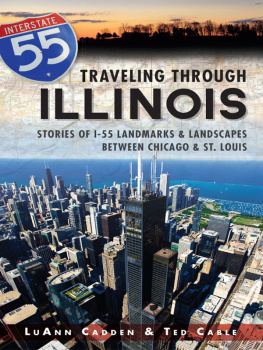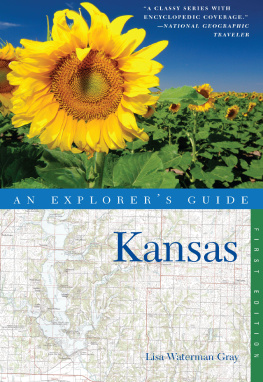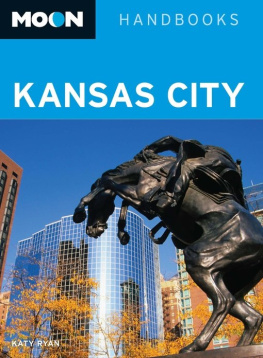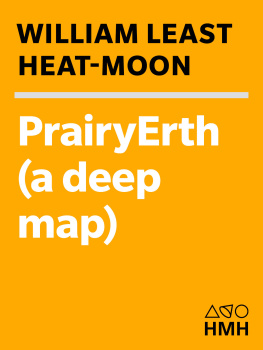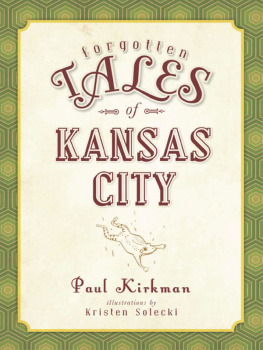Contents
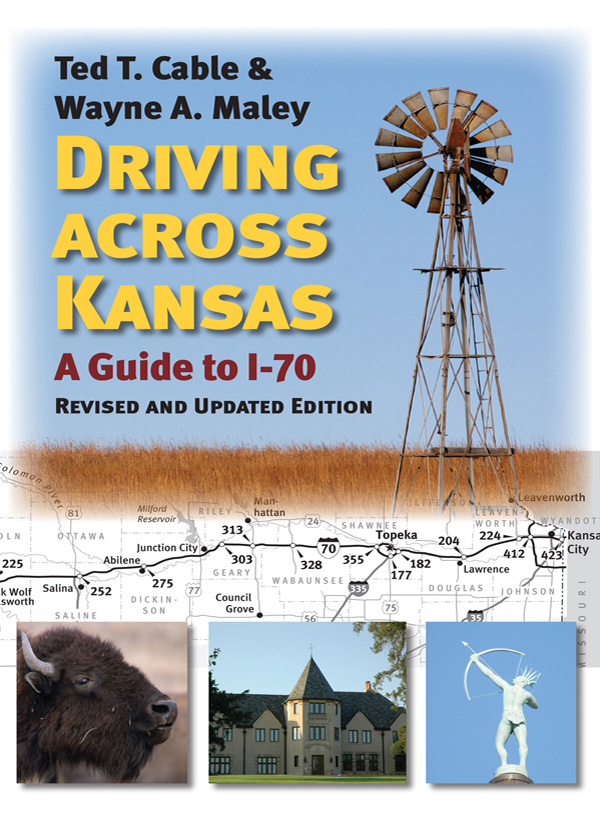
Driving across Kansas
Driving across Kansas

A Guide to I-70,
Revised and
Updated Edition
TED T. CABLE AND WAYNE A. MALEY

University Press of Kansas
2017 by the University Press of Kansas
All rights reserved
Published by the University Press of Kansas (Lawrence, Kansas 66045), which was organized by the Kansas Board of Regents and is operated and funded by Emporia State University, Fort Hays State University, Kansas State University, Pittsburg State University, the University of Kansas, and Wichita State University.
Library of Congress Cataloging-in-Publication Data
Names: Cable, Ted T., author. | Maley, Wayne A., co-author.
Title: Driving across Kansas : a guide to I-70 / Ted T. Cable and Wayne A. Maley.
Description: Revised and updated edition. | Lawrence, Kansas : University Press of Kansas, 2017. | Includes bibliographical references and index.
Identifiers: LCCN 2017007055| ISBN 9780700624140 (paperback : alkaline paper) | ISBN 9780700624157 (ebook)
Subjects: LCSH: KansasGuidebooks. | Interstate 70Guidebooks. | Automobile travelKansasGuidebooks. | KansasHistory, Local. | BISAC: TRAVEL / United States / Midwest / West North Central (IA, KS, MN, MO, ND, NE, SD) | HISTORY / United States / State & Local / Midwest (IA, IL, IN, KS, MI, MN, MO, ND, NE, OH, SD, WI)
Classification: LCC F679.3 .C33 2017 | DDC 917.8104dc23
LC record available at https://lccn.loc.gov/2017007055.
British Library Cataloguing-in-Publication Data is available.
Printed in the United States of America
10 9 8 7 6 5 4 3 2 1
The paper used in this publication is recycled and contains 30 percent postconsumer waste. It is acid free and meets the minimum requirements of the American National Standard for Permanence of Paper for Printed Library Materials Z39.48-1992.
Contents
Preface and Acknowledgments
The true West differs from the East in one great, pervasive, influential, and awesome way: space.... Its that apparent emptiness which makes matter look alone, exiled, and unconnected. Those spaces diminish man and reduce his blindness to the immensity of the universe; they push him toward a greater reliance on himself, and, at the same time, to a greater awareness of others and what they do. But, as space diminishes man and his constructions in a material fashion, it alsoparadoxicallymakes them more noticeable. Things show up out here. No one, not even the sojourner can escape the expanses. You cant get away from them by rolling up the safety-glass and speeding through, because the terrible distances eat up the speed.... Still, drivers race along; but when you get down to it, they are people uneasy about space.
William Least Heat Moon, Blue Highways
So you are crossing Kansas on Interstate 70. Early pioneers heading west hesitated at the edge of the eastern forests, mustering their courage as if the prairies were a lonely ocean or dangerous desert to be conquered. You will soon experience the vastness of the Great Plains and seemingly endless open spaces as you proceed across the state.
Some travelers still find the prospect of crossing the Plains daunting, even in climate-controlled cars cruising along at 70 miles per hour. Today as in the past, for many travelers, the Plains are an obstacle to be overcome on the way to a better placethe Rocky Mountains or maybe California. For eastbound travelers, the great eastern cities or Atlantic beaches beckon. Perhaps hometowns with family and friends are the ultimate destination.
Least Heat Moon wrote of the apparent emptiness of the Plains and the terrible distances that eat up speed. Ian Frazier, in his book Great Plains, noted that interstate highways seem designed to get people across the Plains in the least time possible, as if this were an awkward point in a conversation.
This books purpose is to guide travelers through the apparent emptiness, to interpret things that show up out here in Kansas, and to break the silence in the awkward conversation. Rather than having sojourners escaping the expanses and being uneasy about the space, our goal is to have travelers revel in the spaciousness; sail under spectacular skies; perceive the beauty in subtle, understated, earth-toned landscapes; appreciate the buried treasures of rich soils; and discover compassion and courage in the tales of others who crossed these lands. Our hope is that this book will make travel across the immense space of Kansas an enjoyable and enriching experience.
As you drive through Kansas using this guide, you will glimpse what the state was in days past and what it is today. You will be introduced to prehistoric animals; vast herds of bison and antelope; Native Americans, French trappers, and Spanish explorers; and European settlersall of which have impacted the landscape and natural resources of Kansas. You will see that the Great Plains are more than they appear at first glance. These lands played a pivotal role in westward expansion and in shaping our American heritage. The vast open spaces not only influenced our past but also continue to affect the lives of Americans from coast to coast, particularly at the dinner table. As you travel across Kansas, you may come to agree with Ian Frazier, who wrote, The beauty of the plains is not just in themselves but in the sky, in what you think when you look at them, and in what they are not.
We wish to thank the many individuals we interviewed along the route of I-70; their names appear in the references. We also offer our thanks to the many anonymous people who so generously volunteered information about sites or provided us with directions. In addition, the following people offered valuable information or other assistance: Kelley Blankley, LuAnn Cadden, Mike Chaneske, Robin Grumm, Hank Ernst, Keith Lynch, Elaine Marshall, Mike Rader, Scott Seltman, Jeff Sheets, Joan Shull, and Kasey Windhorst. We are especially grateful to Lowell Johnson for allowing us to use his excellent bird photos.
Most of all, we would like to thank our wives, Marianne Maley and Diane Cable, who served as drivers and readers as we developed and road-tested this book.
Introduction
The world is a book, and those who do not travel read only a page.
Saint Augustine
The state of Kansas was named after a tribe of Indians called Kansa or Kaw, meaning People of the South Wind. This tribe arrived in what is now Kansas around 1720 and settled in temporary villages near the current cities of Leavenworth and Atchison. Later, to be closer to the best bison-hunting grounds, they established their principal village where the Big Blue River joins the Kansas River, near the present city of Manhattan.
From 1492 to 1845, land that became Kansas was at various times claimed by six different countries. The first European to see this land was the Spanish conquistador Francisco Vsquez de Coronado, who explored the area in search of the Seven Cities of Gold in 1541. French trappers and explorers came to this land in the late 1600s and early 1700s. The United States bought the land that is now Kansas from the French in 1803 as part of the Louisiana Purchase.
Although the states name honors the Kaw people, the first explorers to this region found it occupied by the Indians of Quivira, most likely the Wichita tribe and the Pawnee people. However, the Wichita spent most of their time in what is now Oklahoma and Texas. In an era when Spain ruled much of North and South America, Kansas was commonly called Harahey. The people of Harahey were probably Pawnee. Native Americans played a prominent role in the history of Kansas: their heritage and influence will be apparent at many locations along I-70.


